6 transformative Detroit demolitions that helped shape city’s urban landscape
There is something about destruction that draws a crowd. Building demolitions, especially of large or iconic structures, often capture the attention of locals, tourists and media outlets.
While the upcoming demolition of Detroit's waste incinerator may bring some odor and respiratory relief to its surrounding residents, various historical landmarks have suffered the same fate. Demolition may seem like the end of a structure's life cycle; however, it can also signify the beginning of a new phase of urban regeneration.
Throughout Detroit's rich history, there have been numerous lost architectural treasures. Here are some that stand out:
Detroit Museum of Art — 1960
Known as the forefather of the Detroit Institute of Arts (DIA), the Detroit Museum of Art was established in 1885 and opened to the public in 1888 — housed in a building on Jefferson Avenue. Designed by architect James Balfour, the building's grand and symmetrical designs were inspired by ancient Greek and Roman architecture.
However, due to the need for expansion and a desire for a more prominent location, the decision was made to construct a new facility. In 1927, the Detroit Museum of Art moved to its current location on Woodward Avenue and was renamed the DIA. Many of the pieces in the DIA were acquired and originally housed within the former museum's walls.
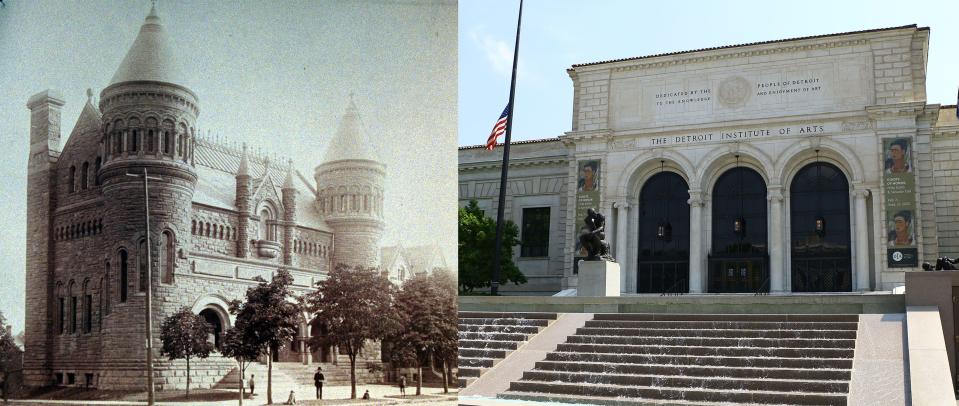
The original building on Jefferson Avenue was eventually repurposed and went through various ownership changes. It was used as a warehouse and later became the home of the Detroit Historical Museum. However, in February 1957, it was announced that the museum would be destroyed for the Hastings Expressway, today known as Interstate 75, according to HistoricDetroit.org. The building was demolished in August 1960.
Today, the DIA continues to thrive in its current location on Woodward Avenue. It has become one of the leading art museums in the United States and a cultural landmark in Detroit.
Old City Hall — 1961
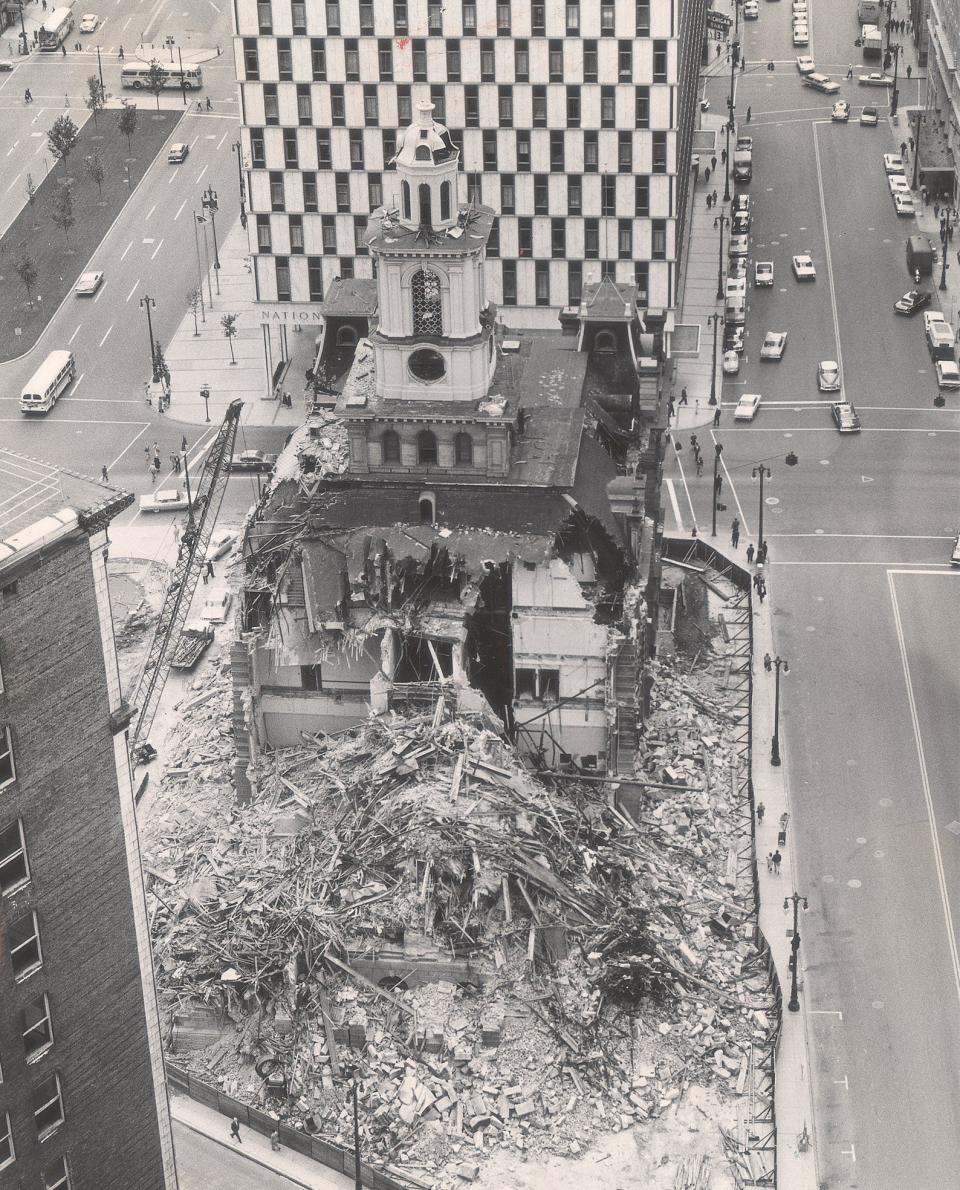
The old City Hall was the heart of Detroit for nearly a century. Constructed between 1871 and 1873, the building stood as a symbol of civic pride and served as the seat of government for both the City of Detroit and Wayne County.
However, as the city and county government expanded over the years, the old City Hall could no longer meet the growing needs of the officials and employees. In the 1950s and 1960s, government offices gradually moved to newer and larger buildings in the downtown area, leaving the old City Hall vacant. Despite preservation efforts and debates surrounding its fate, the building was ultimately demolished in 1961.
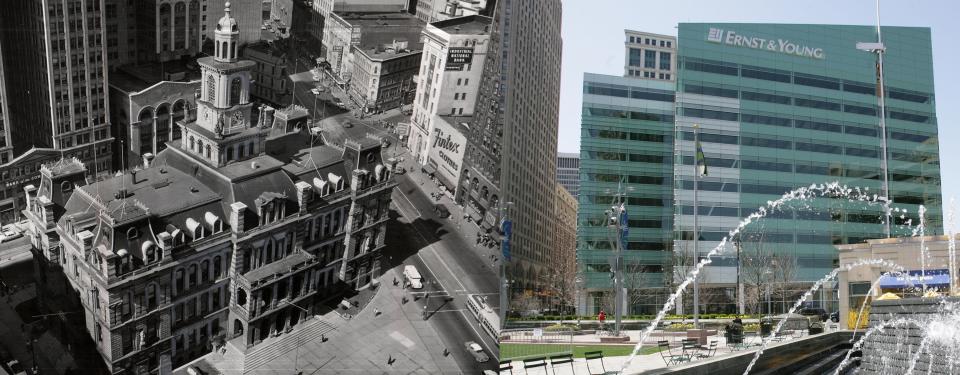
Today, One Kennedy Square stands on the site, occupied by the Ernst & Young accounting firm.
Tallest building implosion in history: J.L. Hudson Co. — 1998
Up until the 80's, the signature downtown Detroit experience included visiting the J.L. Hudson Co. store on Woodward Avenue.
The department store opened in 1911 and rapidly grew to be the tallest in the world during its peak — with 25 stories, 32 floors, four basements, a mezzanine, two half floors, 59 passenger elevators and seven dining rooms and cafeterias. Hudson's was also known for displaying the world's largest American flag each patriotic holiday, starting in 1923.
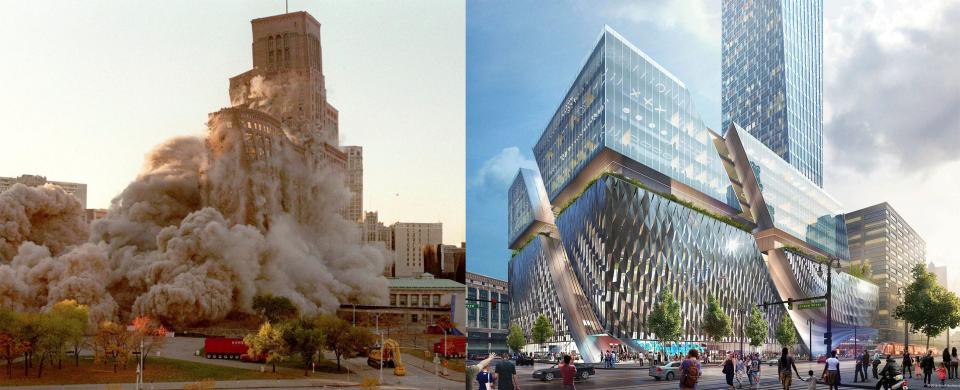
More: 10 cool facts about the legendary Hudson's store in downtown Detroit
After more than 90 years of business, the department store closed on Jan. 17, 1983, largely due to the rise of the suburbs and shopping malls. The building was demolished on Oct. 24, 1998. Many gathered to view the Hudson's collapse, as it was the tallest and largest single building ever imploded. The building was 439 feet tall and took up 2.2 million square feet.
Other Hudson's stores gradually rebranded as Marshall Field's — which eventually phased out and rebranded as Macy's stores. Today, a skyscraper known as the Hudson's site tower is being built at the location and is expected to be completed in the second quarter of 2024.
Statler Hotel — 2005
One of the most extravagant hotels in Detroit's history was the Statler Hotel, which opened for business on Feb. 6, 1915, after only 18 months of construction, according to HistoricDetroit.org. Designed by the renowned New York architect, George B. Post, the hotel was the largest in the Midwest at the time of its opening, and part of a developing ring of skyscrapers around Grand Circus Park.
The Statler Hotel had a total of 1,200 guest rooms during its prime and was one of the first hotels in the United States to have en-suite bathrooms in every room. Other notable features included a ballroom for events, several dining options, meeting rooms and a rooftop garden.
The hotel was a cherished destination for both locals and visitors before a change in ownership, rebranding and economic challenges led the city to foreclose on the property in June 1979. The building remained vacant for 30 years and fell into disrepair; it was demolished, floor by floor, in August 2005.

An apartment complex, City Club Apartments CBD, has been built where the Statler Hotel once stood, at 313 Park Ave. in Detroit — with 288 furnished and unfurnished apartments and penthouses, underground valet parking spaces, resort-like amenities and 13,000 square feet of retail space that includes the Statler Market and the Statler French-American Bistro.
Park Avenue Hotel — 2015
The Park Avenue Hotel, in the Cass Corridor of downtown Detroit, was another symbol of elegance and grandeur during its time. Constructed in 1924 and designed by local architect Louis Kamper, the hotel was 13-stories high and had 252 luxurious rooms.
The hotel's prime location on Park Avenue, near Grand Circus Park, made it an ideal choice for those seeking entertainment, shopping and cultural experiences in the city. Park Avenue Hotel was one of three hotels designed by Kamper and owned by Detroit's most successful hotelier of the early 20th Century, Lew Tuller.
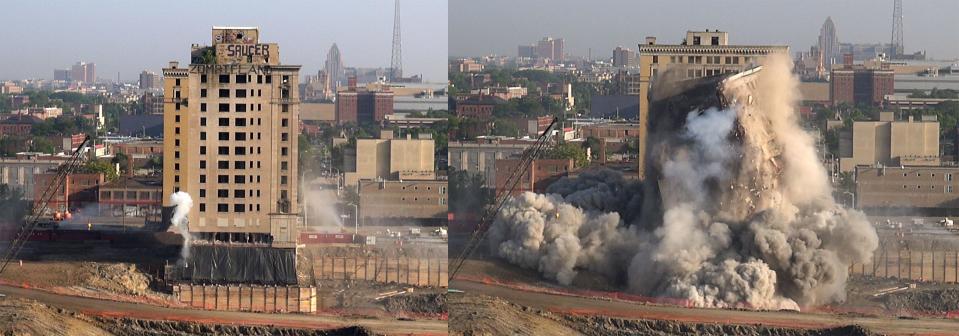
After years of gradual decline in the city and Tuller's business ventures, Park Avenue Hotel was turned into a senior housing complex by the Salvation Army, in 1957. The complex then became a homeless shelter and treatment facility called the Harbor Light Center in the 1980s. The building closed its doors in 2003 and remained vacant until its demolition on June 11, 2015, to make way for a loading dock for Little Caesars Arena.
More: The story of the doomed Park Avenue Hotel in Detroit
Tuller's other hotels, Eddystone and the Royal Palm were also located on Park Avenue; both have been converted into residential buildings. The Royal Palm is now known as the Park Avenue House. All three hotels have been listed on the National Register of Historic Places.
Stone Soap Buildings — 2023
Detroit's Stone Soap Building was a historic industrial building on Franklin Street, along the city's RiverWalk. The building was constructed in 1907 as the headquarters and manufacturing facility for the Stone Soap Company, which specialized in commercial detergents for laundries, restaurants, and car washes. Expanding in the 1920s, Stone Soap Company occupied the building until the late 1990s.

Following the closure of Stone Soap, the property remained empty for nearly two decades. In March 2017, the city selected Banyan Investments to redevelop the buildings into residential apartments, but the plans never came to fruition.
After standing for 116 years, the buildings were deemed structurally unsound, posing immediate danger. The Stone Soap Buildings were demolished in May.
Contact Nour Rahal: nrahal@freepress.com
This article originally appeared on Detroit Free Press: 6 transformative Detroit demolitions that helped shape cityscape

